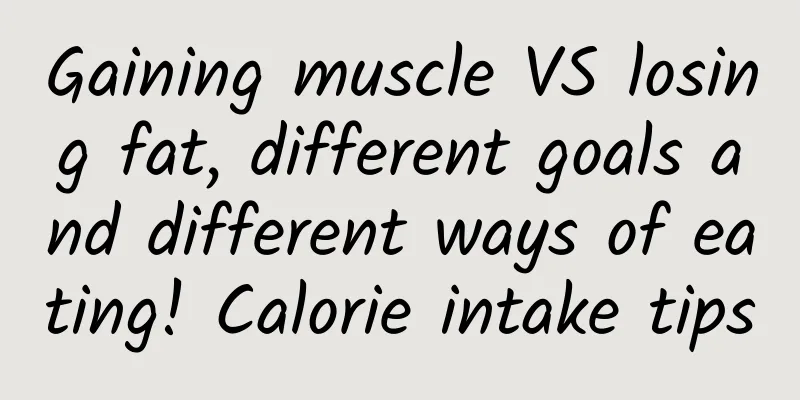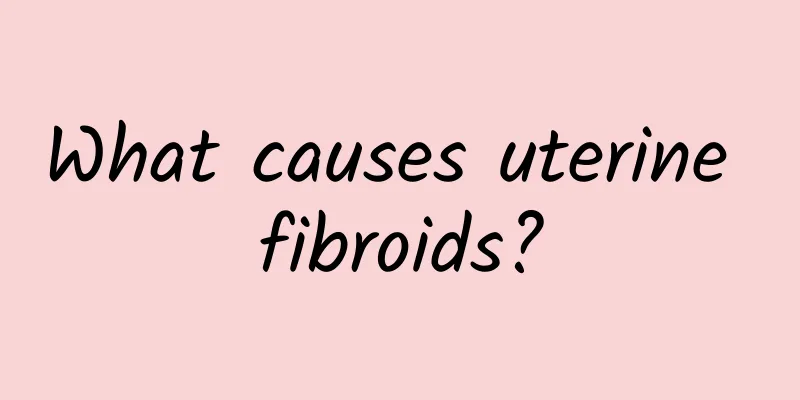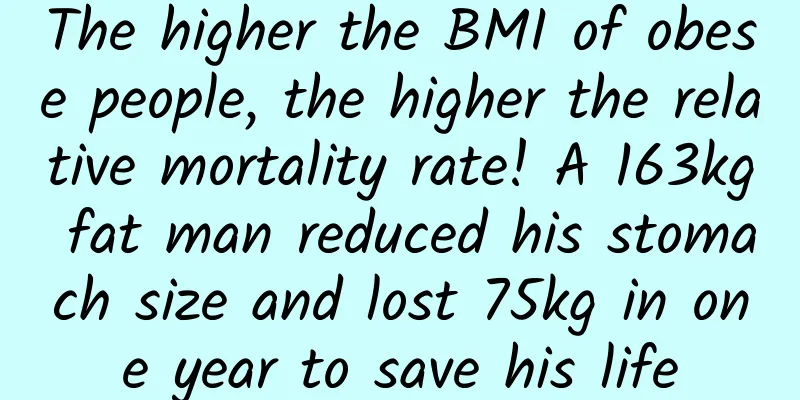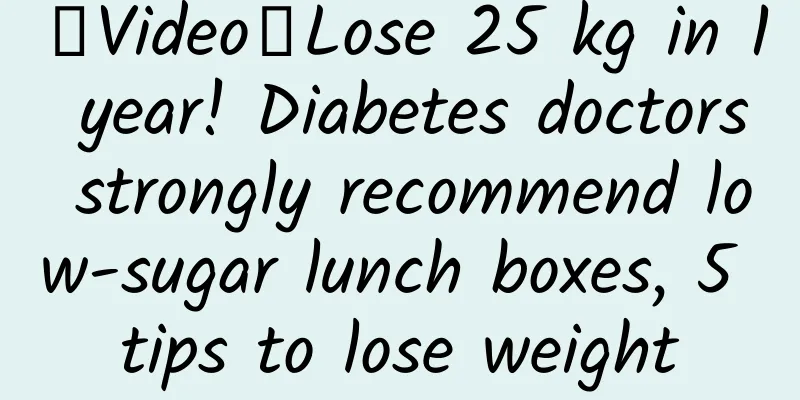Gaining muscle VS losing fat, different goals and different ways of eating! Calorie intake tips

|
Simply put, a muscle-building diet means eating more calories than you need in a day to achieve a calorie surplus, while a fat-loss diet means eating less calories than you need in a day. So how do you calculate the "daily calorie requirements" for these two types? STEP 1 Calculate your basal metabolic rate (BMR) "Basal metabolic rate" (BMR) refers to the minimum calories you consume each day in a resting state, that is, the metabolic rate required to meet basic survival, including the calories required to maintain physiological activities such as breathing, heartbeat, blood circulation, and body temperature. You can use the formula provided by the American Sports Medicine Association to calculate (it is recommended to use a body fat meter for more accurate measurement): ‧BMR (male) = (13.7 × weight (kg)) + (5.0 × height (cm)) - (6.8 × age) + 66 ‧BMR (female) = (9.6 × weight (kg)) + (1.8 × height (cm)) - (4.7 × age) + 655 STEP 2 Estimate your total daily calorie expenditure (TDEE) The total amount of calories our body consumes per day is also called TDEE (Total Daily Energy Expenditure), which is calculated by multiplying the basal metabolic rate by the activity coefficient. Here are the references for activity coefficients: ‧ Sedentary (office type of work, no exercise) → × 1.2 ‧ Light activity (1 to 3 days of easy exercise per week) → × 1.3 ‧ Moderate activity (moderate intensity exercise 3 to 5 days per week) → × 1.55 ‧ Highly active (active work pattern for 5 to 7 days) → × 1.725 STEP 3 Set a goal for muscle gain or fat loss and adjust calorie intake ‧ If the goal is to build muscle → Calorie intake is recommended to exceed TDEE by 5% to 10% ‧ If the goal is to lose fat → the recommended calorie intake is 10% to 20% lower than the TDEE ‧ The goal is to maintain the original body shape → The recommended calorie intake is equal to TDEE If you are not sure whether the estimated daily consumption is accurate, another reliable measurement method is to first grasp a fixed calorie intake, and then observe the changes in your body for a period of time, such as weighing yourself, pinching your belly fat, etc., to determine whether you have achieved your goal of gaining muscle or losing fat, and then make adjustments based on your status. Muscle-building period: The key to diet after entering the muscle-building period is that the daily calorie intake should be about 200 to 300 calories greater than the TDEE. If it exceeds too much, the chance of weight gain will be high. However, it must be reminded that muscle gain is usually inevitably accompanied by fat gain. Unless you have high body fat or are in the honeymoon period of a novice, it is possible to gain muscle and lose fat at the same time. The ideal muscle gain situation is that your weight increases steadily by a small amount, but you don't feel your waistline getting thicker. We call this lean muscle gain (Lean Bulk), which means slowly gaining muscle while minimizing the increase in fat. After reaching the desired goal, if you want to continue to gain muscle, continue to maintain this pace. If you want to start losing fat, then reduce carbohydrates and make your daily calorie intake less than TDEE, and enter the fat loss period! Fat loss period: During the fat-loss period, it is recommended that the daily calorie intake should be about 200 to 300 calories less than the TDEE. For example, May's TDEE is 2000 calories, and my calorie intake during the fat-loss period is about 1700 calories. The nutrient ratio of each meal should be 1.5 to 2 times of your body weight in protein to avoid muscle Loss of calories. The ideal nutrient ratio is: 35-40% carbohydrates, 30-40% protein, and 25-30% fat. In other words, fat accounts for about 1/4 or more of the total calories. After the quality of protein is fixed, the remaining calories are left for carbohydrates! During the fat loss period, carbohydrate intake is less, so it is recommended to save carbohydrates for consumption before and after training as energy supplements before and after training. How can I customize my diet based on my goals and body fat? 1. I want to gain muscle without worrying about gaining fat. How should I eat? If you are a person who cannot gain weight, want to gain muscle quickly and are not afraid of gaining fat, in addition to eating high-protein, high-calorie foods, it is also OK to eat a lot of carbohydrates. Combined with weight training, it is easy to gain muscle. Simply put, as long as people consciously eat 2 times their body weight in grams of protein, they don't need to control their diet too much. But for the sake of health, it is better to eat mainly natural carbohydrates. Eating too much junk food for a long time is still harmful to the body. 2. How should I eat if I want to gain muscle but not fat? If you want to slowly gain muscle but try not to gain fat, you can still eat high-protein foods, but your daily calorie intake should be slightly higher than your TDEE by about 200 calories. Carbohydrates should be eaten before and after training, with low-carb foods on rest days and high-carb foods on training days. If you are still a fitness novice, if you maintain training 3 to 5 days a week, you actually have the opportunity to achieve the dual effects of muscle gain and fat loss at the same time. 3. How should women with more than 30% body fat and men with more than 25% body fat eat? This situation is caused by high body fat. If you are a fitness novice, you actually have great potential for improvement! Pay attention to eating about 200 to 300 calories less than your TDEE, and combine it with regular training, and you can lose fat effectively, and even have the opportunity to gain muscle and lose fat at the same time. 4. How should women with 20-25% body fat and men with around 15% body fat eat? This type of people do not have much fat and need to first increase their basal metabolic rate by building muscle before they can lose fat later. It is recommended to eat about TDEE or slightly higher calories every day, combined with regular weight training, for a few weeks to months before starting to lose fat. If you start losing fat right at the beginning and eat too little, you will easily lose muscle and your body will not be lean. 5. How should women with 15-20% body fat and men with around 10% body fat eat? This type may be too thin or have an athletic physique. Unless you are competing or deliberately want to be as thin as a man, there is no need to continue losing fat. You can start building muscle, or maintain your current status. This article is excerpted from Ruili Beauty International Media "May Power Body! A Complete Guide to Gaining Muscle and Losing Fat: A Bowl of Food for Fitness╳Fat Burning Bodyweight Exercise (with Exercise Demonstration QR Code)" by May (Liu Yuhan) |
<<: What is "hidden muscle"? Is it okay not to train too hard? 10 fitness myths to help you solve
Recommend
How long should I rest after a miscarriage?
The rest time after a miscarriage is generally 2-...
Snoring, sleepiness, sleep apnea ~ weight loss, side sleeping improvement
Obesity is the root of all diseases. For middle-a...
What are the main symptoms of cervicitis?
The incidence of cervicitis has been increasing i...
Do you know how to treat ovarian cysts?
What are the treatments for ovarian cysts? Do you...
What are the symptoms of ovarian cysts?
Experts remind us that we should pay attention to...
Women should pay attention to the early symptoms of uterine fibroids
Uterine fibroids are common tumors in women and a...
Do you know what symptoms of cervical hypertrophy are?
What are the symptoms of cervical hypertrophy? Wh...
The most common cause of adnexitis
Many people suffer from adnexitis in their daily ...
Is pelvic inflammatory disease serious?
Is pelvic inflammatory disease serious? 1. Pelvic...
How long after giving birth can you have sex? What are the dangers of having sex too early after giving birth?
How long you need to wait before having sex after...
Surgery is the main treatment for uterine sarcoma
Uterine sarcoma is a highly malignant female geni...
What is the diet suitable for endometrial tuberculosis
Speaking of endometrial tuberculosis, I believe e...
What to eat to nourish your body after miscarriage? Doctors recommend these 5 foods
After a miscarriage, because of the loss of some ...
What are the factors for recurrence of pelvic peritonitis?
Pelvic peritonitis refers to inflammation of the ...
Treatment of vulvar leukoplakia should be started sooner rather than later
Vulvar leukoplakia is very harmful to patients, e...









